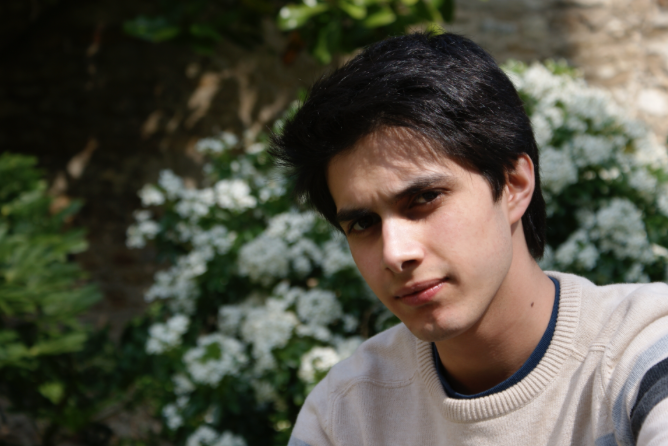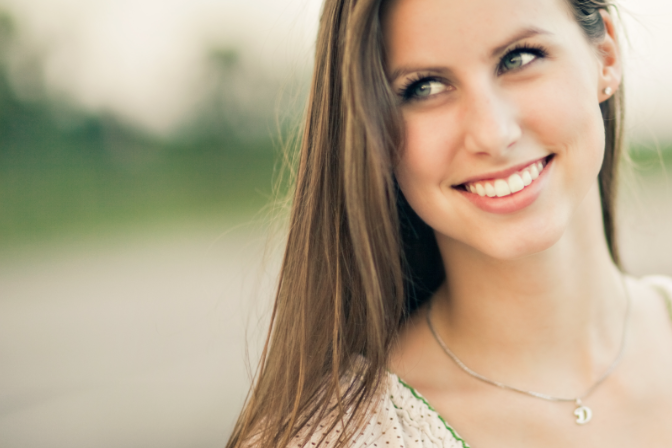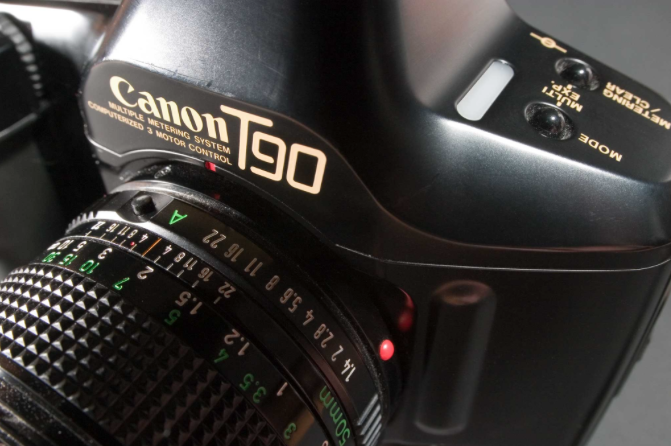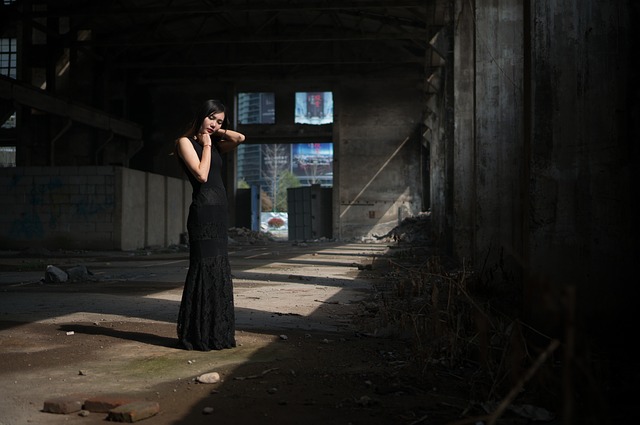Want to be a better portrait photographer? You’ve come to the right place!
All of the tips below – and a heck of a lot more – are covered when you attend any good photography school, but it’s always worth refreshing ourselves of the golden rules from time to time. So, without further ado, here are our top 5 tips that will instantly make you a better portrait photographer.
1. Aperture + Focal Length + Distance From Subject = Background Blur
A subtly blurred background can make a world of difference to portrait photography, and puts the focus squarely on your subject without having a swathe of background detail stealing away attention (as well as adding depth of composition when done right.)

The main method most people rely on to achieve this is to use a large aperture for a shallow depth of field (between f2.8 and f5.6 is ideal), but it’s not the only factor to consider.
For best results, use a larger aperture combined with a long focal length lens (around 55mm to 105mm should do it.) Another thing which will come into play is how far you’re standing away from the subject, which hinges upon the focal length you’re working with and the amount of space available, but balancing all three factors is the key here.
You could always isolate the background and apply a little gaussian blur in post production, but that’s time consuming and the results often turn out looking obviously manufactured. Save yourself a lot of headache by learning how to produce the effect right there in the camera.
2. You Can Move Things
Speaking of backgrounds and reducing visual noise, you’ll sometimes find yourself in an interior setting with a lot of junk in the background (if you’re photographing someone at work for their portfolio, for instance.)
This is one of the simplest tips in the book, but one which is often forgotten: you’re allowed to pick something up and put it out of shot.
Whether it’s through trying to be polite in someone else’s environment or through fear of being too obtrusive, many photographers – even professionals – seem to get shy about clearing the shot of junk.
Don’t be. During brief period of time that you’re shooting, that place is your studio and you owe it to whoever you’re photographing to roll your sleeves up and set up a killer shot.
3. Become a Master of Light

The difference between a good photographer and a great photographer is the masterful use of light sources. Some solid tips to bear in mind when you’re out on a shoot:
- Have the subject face the lightsource and shoot with your back to it.
- If you’re outside and the main light source is directly above you – i.e the sun – have the subject tilt their face ever so slightly upwards. You’ll be amazed at how great this looks.
- Natural is nearly always better. Of course, it’s not possible to use solely natural light in every occasion and sometimes you might want to bring in studio lighting, but an over-reliance on artificial lighting can make your portrait photography look like stock photography.
- As we discussed earlier in our How to Master Ocean Photography post, the “golden hour” is an indispensable tool and a gift you should accept with both hands when doing portrait photography outside; here’s a very handy tool that can help you figure out exactly when that is for your location and time of year.
4. Aperture Priority Mode
It’s not “cheating” to let your camera do the hard work for you… in fact, making the job easier is one of the main benefits of the DSLR age.

Turn your camera mode to aperture priority mode – look for either the ‘A’ or ‘Av’ icon on most camera mode dials – and let the camera select the shutter speed for you based on your selected aperture value. It’s a great mode to shoot in while conducting portrait photography, as nine times out of ten it’ll produce the effect we covered in Tip One of this post… and it’s easy to override if not.
And that leads us onto the what is possibly the best advice you might ever put into practice as a portrait photographer:
5. Be Creative, Not Technical
One thing you’ll always notice is that, contrary to an extremely talented and experienced portrait photographer that tends to carry no more than a few lenses around with him or her, someone just starting out nearly always has a car full of equipment.
Don’t get bogged down in the technicalities of it all. The client invariably doesn’t care about any part of your job, except for one thing: how good the photos look.

So, in a nutshell, stop fiddling with your five spare lenses and start taking more photos!

